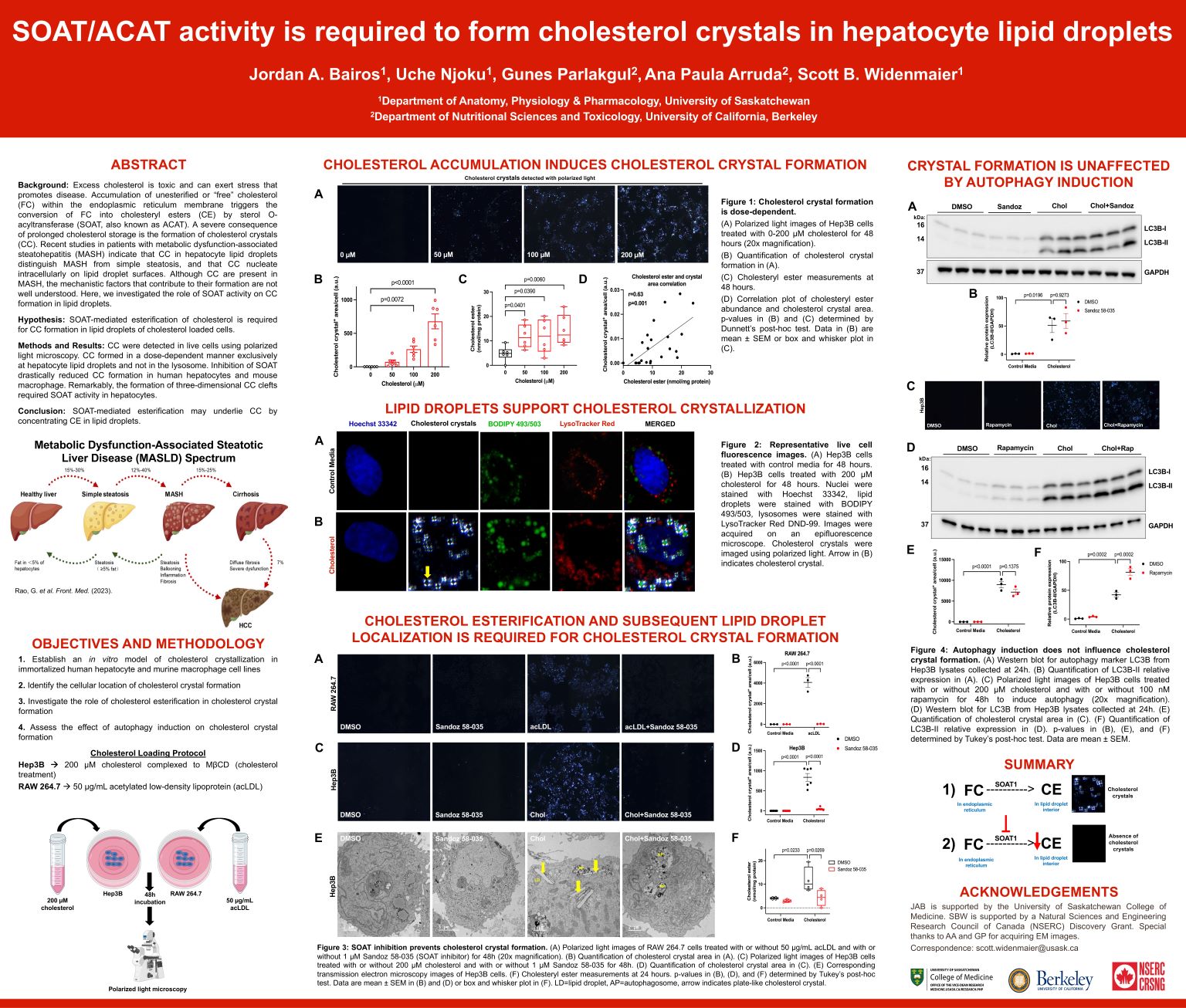
SOAT/ACAT activity is required to form cholesterol crystals in hepatocyte lipid droplets
Jordan Bairos
Background: Excess cholesterol is toxic and can exert stress that promotes disease. Accumulation of unesterified or “free” cholesterol (FC) within the endoplasmic reticulum membrane triggers the conversion of FC into cholesteryl esters (CE) by sterol O-acyltransferase (SOAT, also known as ACAT). A severe consequence of prolonged cholesterol storage is the formation of cholesterol crystals (CC). Recent studies in patients with metabolic dysfunction-associated steatohepatitis (MASH) indicate that CC in hepatocyte lipid droplets distinguish MASH from simple steatosis, and that CC nucleate intracellularly on lipid droplet surfaces. Although CC are present in MASH, the mechanistic factors that contribute to their formation are not well understood. Here, we investigated the role of SOAT activity on CC formation in lipid droplets.
Hypothesis: SOAT-mediated esterification of cholesterol is required for CC formation in lipid droplets of cholesterol loaded cells.
Methods and Results: CC were detected in live cells using polarized light microscopy. CC formed in a dose-dependent manner exclusively at hepatocyte lipid droplets and not in the lysosome. Inhibition of SOAT drastically reduced CC formation in human hepatocytes and mouse macrophage. Remarkably, the formation of three-dimensional CC clefts required SOAT activity in hepatocytes.
Conclusion: SOAT-mediated esterification may underlie CC by concentrating CE in lipid droplets.
